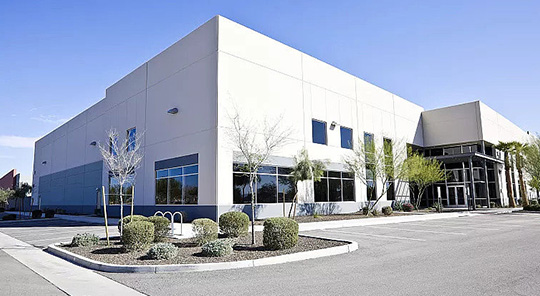Computer vision is a cutting-edge technology based on digital image and video processing, which has been widely applied in the field of artificial intelligence. OpenCV (Open Source Computer Vision Library) is a cross platform computer vision library primarily based on C++language, widely recognized as one of the best computer vision libraries in the industry.
Compared to traditional image processing techniques, computer vision and OpenCV algorithms greatly improve the processing efficiency and accuracy of images and videos, while also bringing more application scenarios and commercial value, which has important practical significance:
Automated visual inspection: For example, in the manufacturing and medical industries, computer vision can identify and analyze product defects, medical images, and other data, greatly improving production efficiency and medical accuracy.
Intelligent security monitoring: For example, computer vision can monitor and identify personnel captured by surveillance cameras, effectively preventing criminal activities and ensuring social security.
Intelligent driving and drone navigation: Computer vision is also widely used in the field of intelligent driving and drone navigation, greatly improving the automation level of vehicle driving and drone flight, enhancing the intelligence, stability, and safety of the system.
Artificial Intelligence and Big Data Applications: Computer vision technology has also been widely applied in the field of artificial intelligence, playing an important role in various aspects from image annotation and recognition to intelligent algorithm optimization.
Therefore, computer vision and OpenCV algorithm are important and rapidly developing technologies, playing an increasingly critical role in various industries and application scenarios. In the future, this technology will continue to evolve and innovate, bringing more possibilities and opportunities for people's lives, work, and even social development.
But what content does computer vision and OpenCV algorithm need to learn, and how should we learn it? Today, we will make a detailed summary here:
OpenCV algorithm development and learning
OpenCV4 is a cross platform computer vision library that includes numerous modules, each with its unique purpose and characteristics. The following is an introduction to the main modules in OpenCV4:
Core module
The core module of OpenCV is the core module of the entire library, providing a large number of functions and classes to support almost all operations in fields such as image processing, computer vision, and machine learning. The main functions of this module include:
Array structure: The most important data structure in the core module is Mat, which is a multidimensional array used to store images and other data. In addition, it also defines some vector objects such as Point, Size, and Rect.
Mathematical Operations and Matrix Processing: The core module provides a wide range of mathematical functions and linear algebra tools, such as matrix operations, eigenvalue decomposition, SVD decomposition, and linear equation system solving.
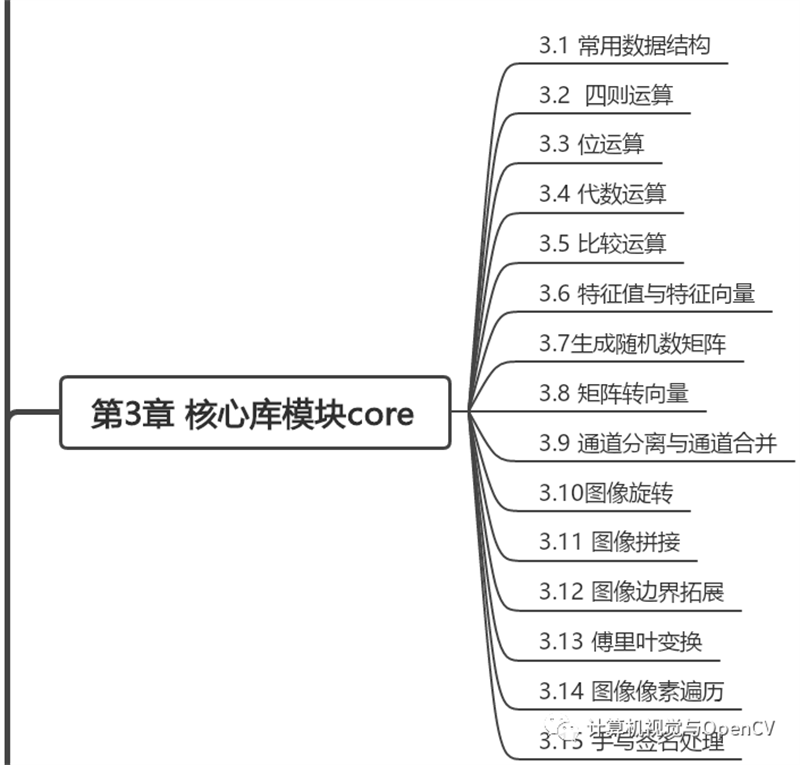
Imgcodecs module
The imgcodecs module of OpenCV is a module used for loading and saving images, which provides a wide range of image codecs, including JPEG, PNG, BMP, GIF, TIFF and other formats. At the same time, it supports the use of multiple compression methods to store and read image data, such as lossless compression, region compression, etc.

Imgproc module
The imgproc module of OpenCV is one of the most important modules in the field of computer vision, providing rich functionality and powerful performance in image processing. This module mainly provides the following functions:
Image transformation: includes various transformation methods such as scaling, rotation, affine, and perspective transformation, and also provides polar constraint transformation functions.
Image filtering: Provides various types of image filters, such as Gaussian filters, median filters, bilateral filters, as well as morphological filters, such as erosion, dilation, open and close operations, for processing noise and error perception in images.
Image segmentation: including threshold segmentation, adaptive threshold segmentation, region growth, watershed segmentation and other methods. The common application fields are target detection and recognition.
Shape analysis: The core module uses techniques such as center of gravity, contour analysis, convex hull, and graphic approximation to perform feature analysis on two-dimensional or three-dimensional objects, such as detecting circles and lines in images, measuring object size and shape, and so on.
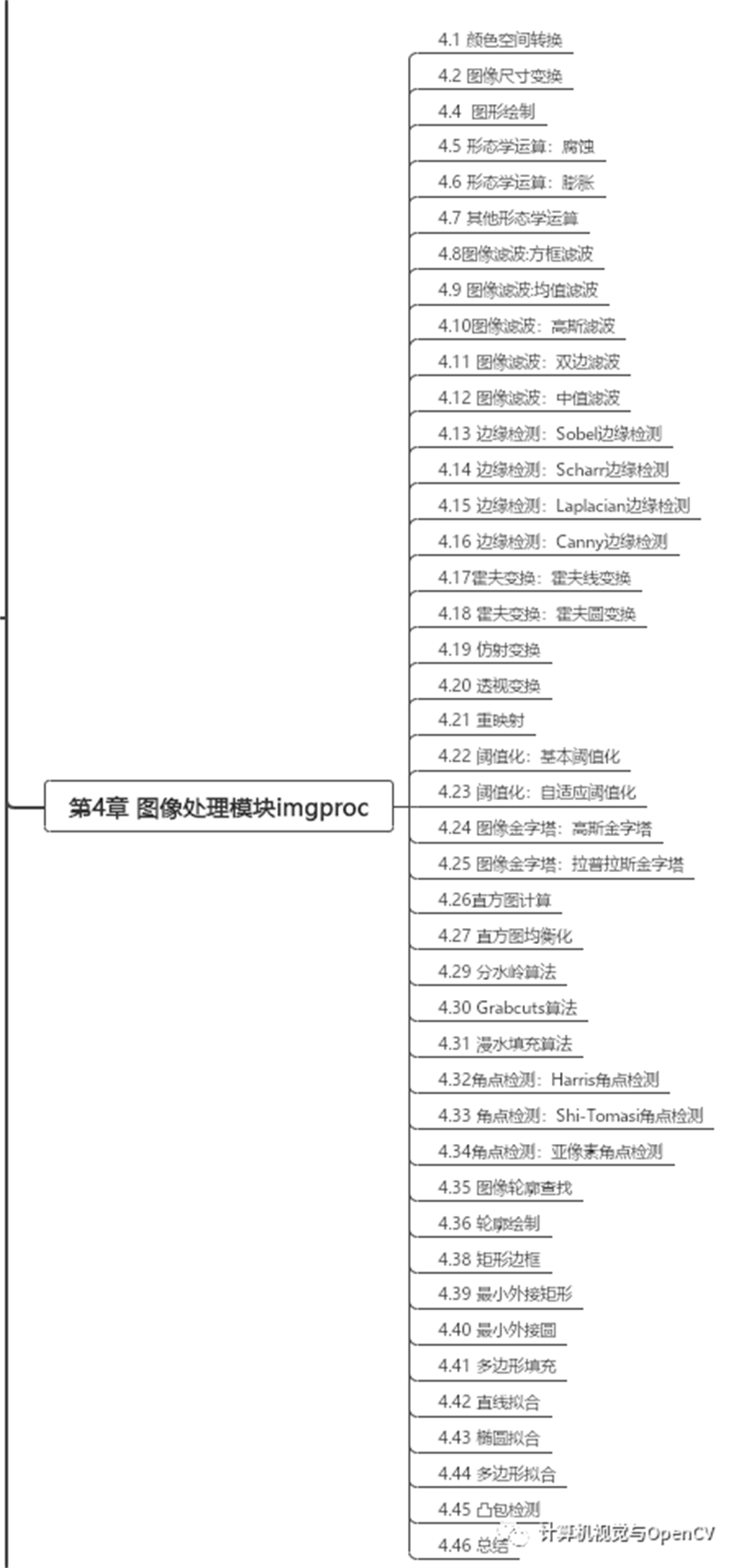
Highgui module
The highgui module of OpenCV is specifically designed for window display and event processing. This module provides functions and tools that can be used to create GUI interfaces and interact with images or videos. The following are the main functions of the highgui module:
Window management: Provides functions that can be used to create, name, move, reset, and close windows. Common windows include the original image window, mouse interaction window, control bar window, etc.
Mouse and keyboard event response: By registering callback functions, users can quickly define events such as mouse clicks and buttons in the window. This feature supports interactive program development.

Video module
The video module of OpenCV provides a series of classes and functions for video input and output, including:
Video Capture: This module provides the VideoCapture class, which can open a local camera or read a video file, and can read and process video frames.
Stream compression and decoding: The videoio module provides two classes, VideoWriter and VideoCapture, which can be used to encode video frames into a specified format for encoder calls, and can also be used in conjunction with the VideoCapture class for video frame decoding. Common video codecs include MPEG, H.264, VP8/VP9, etc.
Video output: VideoWriter class can be used to store videos in local files and transmit them using corresponding codecs to replace simple interface methods such as FileStorage.

Video module
The video module of OpenCV provides video analysis functionality, mainly including video processing related content such as motion estimation, background separation, and object tracking.

Photo module
The photo module of OpenCV provides content related to image restoration and image denoising.
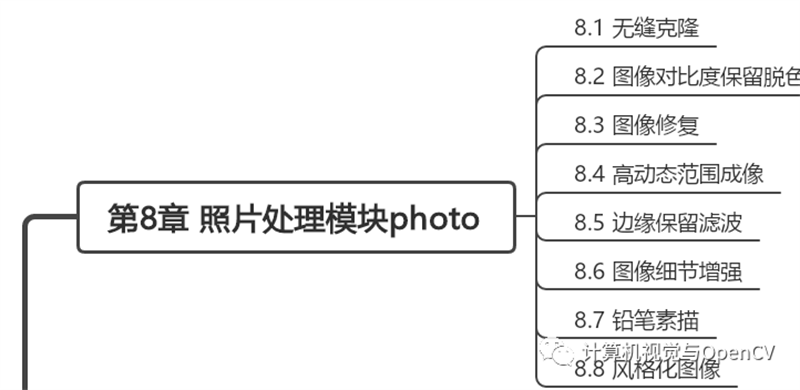
Feature2d module
The feature2d module of OpenCV is a module used for image feature extraction and description, providing various key point detection and feature description algorithms.
Common key point detection algorithms include Harris corner detection, Shi Tomasi corner detection, SIFT key point detection, SURF key point detection, etc; Feature description algorithms include SIFT descriptors, SURF descriptors, ORB descriptors, etc.
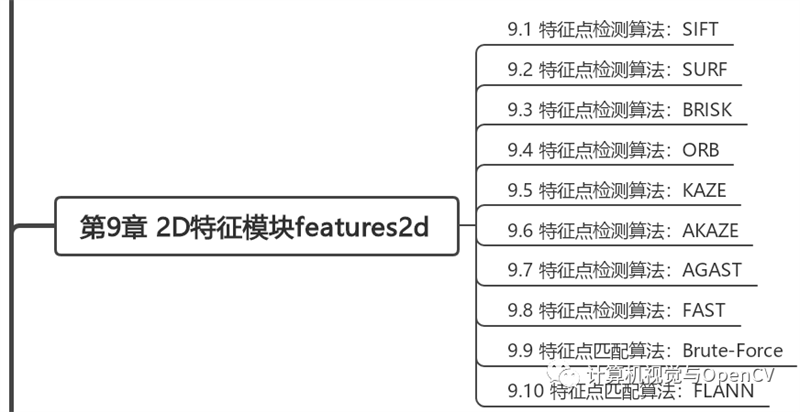
Calib3D module
The Calib3D module of OpenCV is a module used for camera calibration and 3D reconstruction, providing various camera calibration and pose estimation algorithms.
Common camera calibration algorithms include Zhang's method, Tsai's method, OpenCV's built-in calibration method based on chessboard and dots, etc. By processing multiple images captured by the calibration board, information such as camera intrinsic matrix and distortion parameters can be obtained. The pose estimation algorithm can obtain the three-dimensional position and pose information of objects from multiple perspectives captured by the camera, including solving the PnP (Perspective n Point) problem, stereo matching, and so on.
In addition, the Calib3D module also provides functions such as stereo camera calibration, binocular matching, triangulation, as well as tools for converting pinhole camera models into fisheye camera models.

Objdetect module
The objdetect module of OpenCV is a module used for object detection, providing various object detection algorithms and training tools.
Common object detection algorithms include Haar feature classifier (Cascade Classifier), HOG+SVM, etc. Haar feature classifier is a classifier based on Adaboost algorithm, which is widely used and easy to understand; HOG+SVM is a method based on Histogram of Oriented Grades and SVM, which can achieve good object detection results in complex backgrounds.

Ml module
The ml module of OpenCV is a module used for machine learning, providing various classic machine learning algorithms and processes, including classification, regression, clustering, dimensionality reduction, and other tasks.
Common machine learning algorithms include KNN, SVM, Decision Tree, Random Forest, etc. These algorithms train sample data to obtain a model, which is then used to predict or classify new input data.
In addition to providing various machine learning algorithms, the ml module also provides tools such as Feature Selection and Cross validation, which can help data scientists better construct and evaluate machine learning models.

DNN module
The DNN module of OpenCV is a deep learning module that provides tools and algorithms for deep neural networks (DNNs), allowing users to use trained neural network models for image and video analysis.
The DNN module supports various common deep learning frameworks such as Caffe, TensorFlow, MXNet, and provides some pre trained deep learning models such as SSD, YOLO, MobileNet, and ResNet. In OpenCV, users can achieve tasks such as object detection, face recognition, semantic segmentation, etc. by constructing a DNN model and loading pre trained weight files.
In addition to loading pre trained models, the dnn module also provides some tool functions, such as the BlobFromImage function, which can convert images into blob objects input by neural networks; Some optimization algorithms are also provided, such as bounding box regression and non maximum suppression (NMS) algorithm, to improve the accuracy of object detection.

Note: This article (including images) is a reprint, and the copyright of the article belongs to the original author. If there is any infringement, please contact us to delete it.
